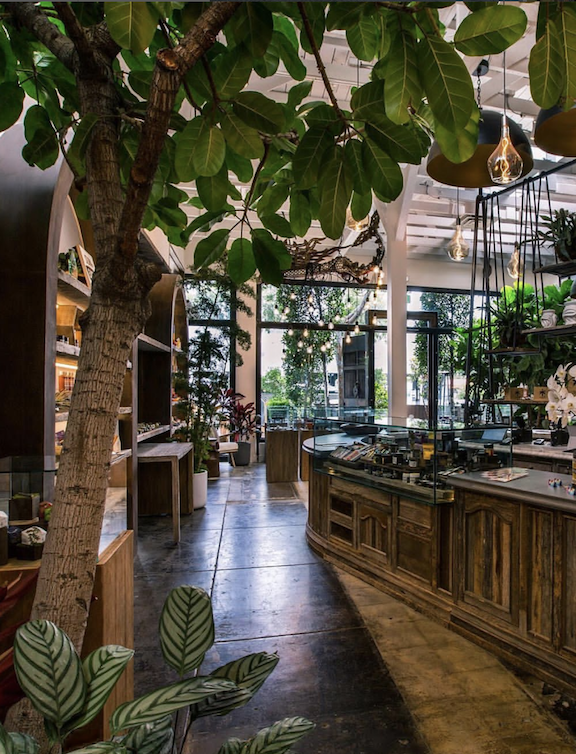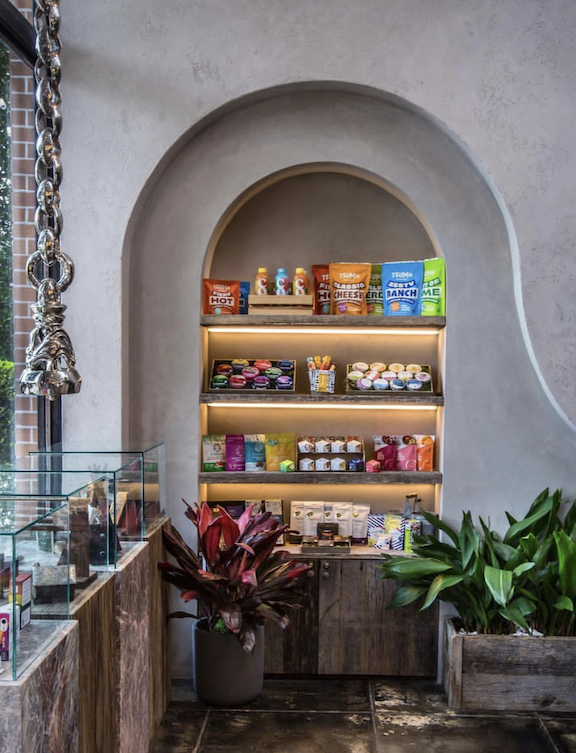By Shelby Tuttle
As an artist and icon of hospitality design, Thomas Schoos has helmed the
creation of some of the world’s most iconic restaurants, hotels, and nightclubs
for nearly three decades. The biggest names in hospitality trust him with
their brands, which often earn public and professional accolades based on his
sometimes off-beat but always chic designs.
Feathers in Schoos’ well-decorated cap include restaurants like Tao in NYC and Las Vegas (the latter earning the title of highest-grossing restaurant in the country for several years running); Koi in West Hollywood; and Morimoto in Napa Valley, Waikiki and Mexico City; along with hotels like Santa Monica’s The Huntley — for which Schoos led a complete redesign of the property that earned the hotel both notable press and critical acclaim.
In Arizona, Schoos was responsible for the widely celebrated design of celebrity chef Brian Malarkey’s now-shuttered Scottsdale hotspot, Searsucker. Restaurant scene enthusiasts circa 2013 may remember a host of brightly colored barnyard animal sculptures (created by Schoos) in front of the restaurant along Camelback Road, tempting passersby to stop and explore the space’s bold yet comfortable interior. Coupled with Malarkey’s irreverent yet approachable menu, Searsucker’s inviting design fostered a feeling of social gathering not yet seen in Valley dining – earning it a spot among the country’s “Top 100 Hot Spots” on OpenTable.

Last year, Schoos was back on the Valley restaurant scene, this time making waves with another Top Chef alum, Angelo Sosa, at JW Marriott Desert Ridge’s upscale Tía Carmen. The restaurant’s highly Instagrammable, earth-meets-art theme is rooted in sophisticated simplicity — a neutral color palette anchors soaring arched ceilings that are both exaggerated and soft in style. Oversized handmade plaster light fixtures designed and handmade by Schoos punctuate the space in a dramatic yet uncomplicated manner. In just a few short weeks, the hotel will unveil another Schoos design with its newest restaurant, Kembara, a pan-Asian concept also led by Sosa.
And while Schoos may be most known for his work in hospitality circles, Hollywood’s elite know him, as well. Celebrities like Courteney Cox, Will Smith and Jada Pinkett Smith, Ellen DeGeneres, Tommy Mottola, and Jessica Simpson have all trusted him to make their palatial pads feel like home. In 2019, actor and cannabis advocate Woody Harrelson approached Schoos with a unique idea: turn the now former office space of Schoos Design into a dispensary.
According to CEO of Schoos Design Michael Berman, the location qualifications for special cannabis licenses in West Hollywood — specifically for onsite consumption — are very rigid. And the building, owned by him and Schoos, happened to meet the requirements.
“Thomas and I were inundated with people wanting to lease our building,” he says. “We finally agreed to lease the property when we were approached by Woody. Not because he’s a celebrity, but because he said he didn’t want to change anything in the
backyard — he wanted to keep the pond, koi fish, and even asked if our birds could continue to live there.”
The Woods is co-owned by Harrelson, Bill Maher, John McEnroe, Schoos and Berman, along with ERBA Markets founders Jay Handal and Devon Wheeler. The new 8,000-square-foot expanse includes a retail dispensary; a THC consumption bar that serves cannabis-infused drinks and non-medicated complimentary tea and coffee; and a tropical, on-site consumption garden — the only of its kind in Los Angeles — that can be rented by the hour. Most recently, The Woods opened a cocktail bar offering liquor, wine, and beer. Per the state of California, cross consumption of alcohol and cannabis is not permitted in a public space. Accordingly, guests can only consume alcohol at the bar and cannabis in the cabanas or garden.

When speaking of the building’s history and the years he spent there, Schoos is somewhat sentimental.
“The building is from 1925 — it’s the original floor. That was my studio,” he says. “My birds are still there.” He references his black palm cockatoo. “That’s George. That’s our mascot.”
The garden is the product of Schoos’ intentionality and mindful cultivation, culminating in 15 years of work that birthed a lush, tranquil paradise of various tropical trees and shrubs, complemented by large stone Buddhas that are both commanding and unobtrusive at the same time.
“The garden is luscious with over 150 different species of plants — we have a full-time gardener,” he says.
His use of greenery extends to the interior of the space, largely influenced by his many travels to Asia.
“I cut 36 x 36-inch holes in the slabs and I planted trees in the soil, inside the dispensary. It’s very, very different,” he says.
Both inside and out, the urban oasis champions sustainability, making use of reclaimed and recycled materials wherever possible. Apart from the spectacular greenery, the Zen inducing design is grounded by the use of hand-hewn fixtures and wooden panels made from reclaimed wood.
“It’s all reclaimed from old barns and old sidings,” says Schoos.
Berman adds, “Whenever possible, natural fiber materials were used in the upholstery, and since Woody is a vegan, there was no leather used in any of the new furniture pieces. He’s incredibly ecologically conscious.”
For Schoos, lighting has always been key to creating a beautiful space — and overhead, one might notice nods to some of the designer’s former projects. Half-dome shades — although of different material and color — may remind Schoos’ followers a bit of his work at Tía Carmen. Above a retail display, Edison bulbs dangle causally, unevenly draped over two hand-carved 150-year-old dragons repurposed from a temple in Thailand — a motif that might echo memories of his signature rope light design that made its way into all four of Malarkey’s Searsucker locations.

Berman notes that the collective goal was to make The Woods different from other dispensaries.
“Thomas noticed how much other cannabis dispensaries looked the same,” he says.
He’s not wrong. While many evoke ultra-modern Apple store vibes, others can look a bit like a makeup counter — one giant box of glass retail cases and lifeless, fluorescent lighting. The Woods shatters these overproduced conventionalities, raising the bar and setting a new standard for cannabis retail in America.
Bernman continues, “Thomas always says, ‘You feel a room before you see it,’ and that’s what happens at The Woods. People are always commenting on how comfortable they are when they go there — how the ambience feels natural and welcoming.”
With all aspects of The Woods finally completed over the last few weeks, with the help of Berman and his team, Schoos will turn his focus to a host of pressing projects that include the aforementioned opening of Kembara in North Phoenix, along with Italian Night in Dallas — a restaurant concept that Schoos describes as a cross between a Fellini movie and 1960s Italian chic. Personally, he’ll be devoting time to two passion projects of his own: a 5,000 square-foot underground Earth house on 105 acres in Yosemite that will be completely off the grid, and a fully sustainable residential compound in Belize.
Header photo: Designer Thomas Schoos sits among his work in the Thomas Room at The Woods dispensary in West Hollywood. Photo by Ray Daily | Gray Area Agency (grayarea.com).
Read more design articles from Green Living Magazine.






